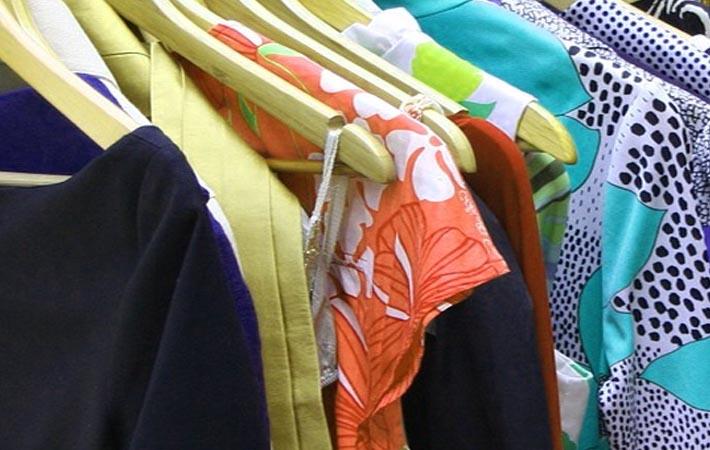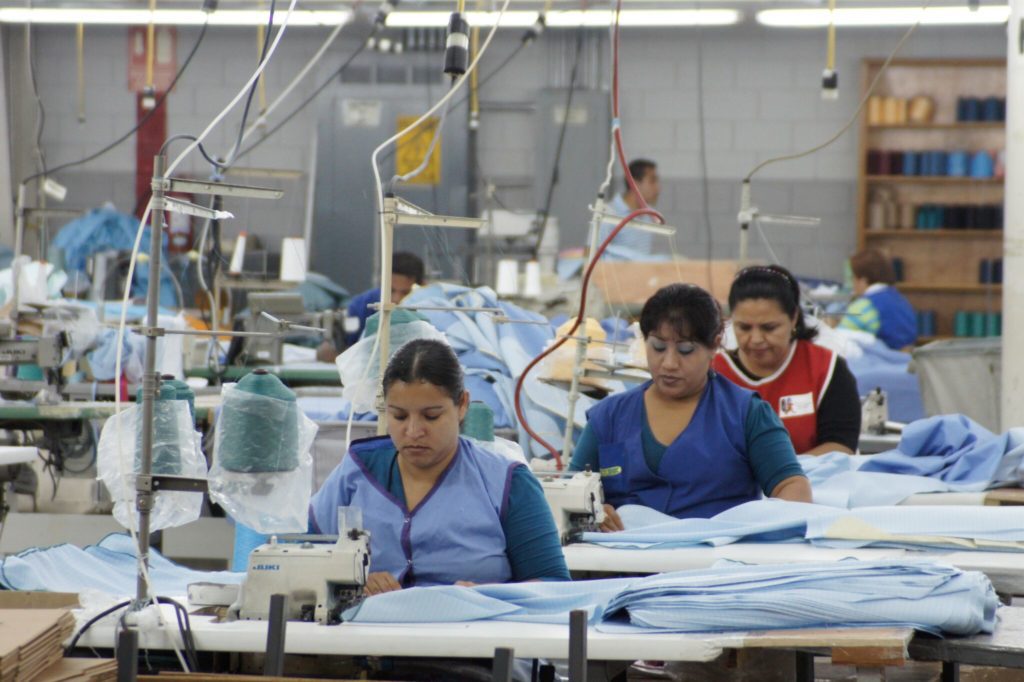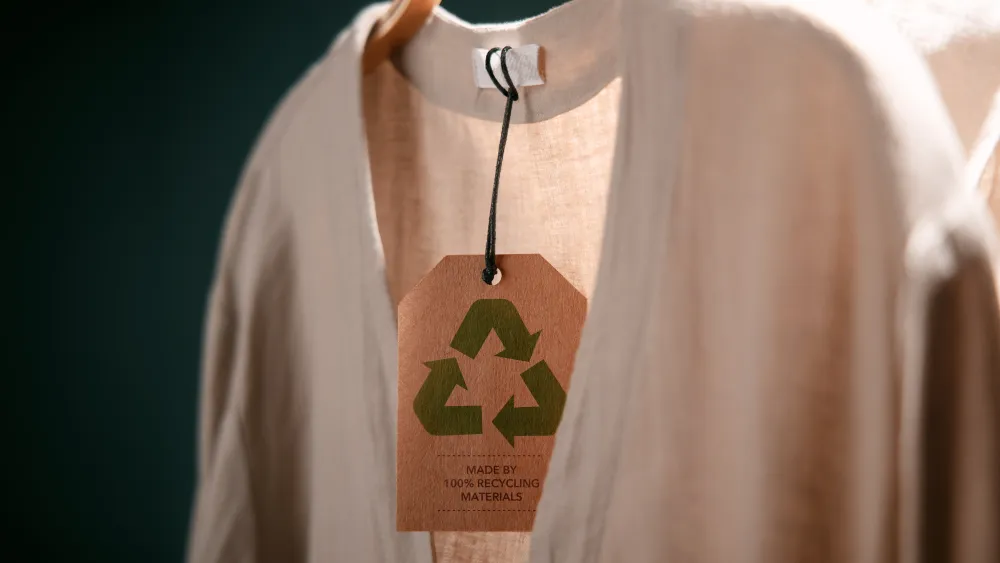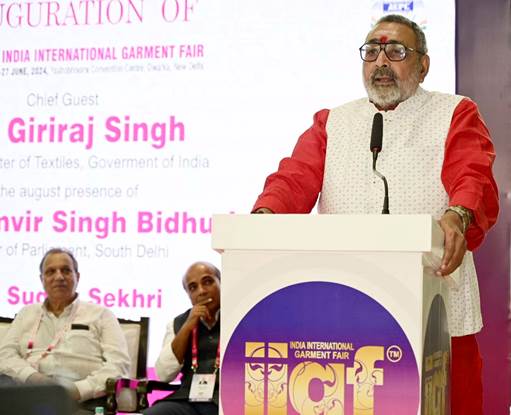FW
In a significant stride towards sustainability, bluesign and the Sustainable Chemistry for Textile Industry (SCTI) have donated the innovative Sustainable Chemistry Index (SCI) Methodology to the Zero Discharge of Hazardous Chemicals (ZDHC) Foundation. This collaboration aims to transform chemical management across the textile, leather, and fashion industries by providing a unified, transparent framework to address environmental impacts comprehensively.
The fashion industry has long grappled with the use of hazardous chemicals, hindered by inconsistent regulations and overlapping standards. Despite various efforts, a lack of coordinated action and transparency has stymied progress, leaving consumers uninformed about the environmental impact of their purchases.
Leading the charge for change, SCTI, a consortium of pioneering chemical manufacturers, and bluesign, a sustainability solutions provider, have developed the SCI to streamline and enhance chemical assessments. The SCI offers a holistic approach to evaluating the environmental impact of chemicals throughout a garment's lifecycle, from responsible sourcing to end-of-life considerations.
The SCI introduces key metrics such as supply chain transparency, reduced fossil dependency, product carbon footprint, and resource efficiency. This comprehensive framework allows the industry to better assess and promote circularity and sustainability in chemical use.
By donating the SCI to ZDHC, SCTI and bluesign aim to foster industry-wide collaboration. The SCI will become the cornerstone of ZDHC's Chemicals to Zero (CTZ-A) program, elevating sustainable chemistry standards. In 2024, ZDHC will integrate SCI content through stakeholder engagement, enhancing its Roadmap to Zero Program and making the SCI publicly available for widespread adoption.
Industry leaders commend this initiative. Wolfgang Schumann, SCTI Chairman, highlights the convergence of isolated approaches, while Isabella Tonaco, SCTI Executive Director, emphasizes the power of collective action. ZDHC CEO Frank Michel underscores the transformative potential of integrating SCI into the ZDHC Framework, showcasing thought leadership and driving positive change in sustainable chemistry.
This collaboration empowers manufacturers and brands to make informed, responsible chemical choices, committing to a sustainable future for the textile industry.
The Southern India Mills’ Association (SIMA) will host the 14th Texfair, a prominent textile machinery fair, from June 21 to 24 in Coimbatore.
SIMA chairman SK Sundararaman and Vice-chairman S Krishnakumar announced that the event will feature 240 exhibitors, including international participants, across 260 stalls.
Attendees will showcase textile machinery, spares, accessories, and cutting-edge technologies, with the fair expected to generate Rs1,500 crore in business.
Sundararaman highlighted the ongoing need for textile mills to invest 2.5 per cent to 3 per cent of their turnover in spares and modernization efforts. Texfair aims to connect mills with suppliers to help reduce costs and enhance efficiency.
Nearly 40 per cent of exhibitors hail from Tamil Nadu, with 30 per cent to 40 per cent representing the MSME sector. The event is poised to benefit small-scale textile units seeking to lower operational costs.
Noting the cyclical nature of the textile industry, particularly in spinning, Sundararaman expressed optimism for a revival following a recent downcycle.
He emphasized the importance of the Coimbatore region’s textile and clothing industry focusing on value addition, new product development, and branding to capitalize on emerging opportunities.
SedoTreepoint has successfully upgraded the manufacturing capabilities and digital integration of the fabric dyeing plant of Kudu Knit Process their fabric dyeing plant in Ludhiana, India.
Marking a significant step in the company’s digital advancement, the plant was upgraded with SedoMaster and ColorMaster. The installation of SedoMat 8015 controllers and the integration with SedoMaster’s central manufacturing execution system allowed Kudu to establish an automatic dispensing unit, thereby expanding their factory operations in Ludhiana. This upgrade supports Kudu in efficiently producing a diverse range of fabrics, including cotton, polyester, and viscose blends, while meeting strict timelines.
The integration of SedoMaster and ColorMaster not only boosts Kudu’s production capabilities but also highlights their dedication to innovation and efficiency in textile manufacturing.”
Additionally, the implementation of ColorMaster ensures precise color management and optimal production recipes, improving quality and cost-effectiveness across Kudu’s manufacturing operations. As Kudu continues to incorporate more ERP functionalities and adopts SedoApp for workflow enhancements, their digital transformation journey with SedoTreepoint is set to achieve further optimisations and operational efficiencies.
In response to the rapidly evolving landscape of the textile industry, Intertextile Shanghai Apparel Fabrics – Autumn Edition 2024 is set to introduce the pioneering Digital Solutions Zone. Scheduled from Aug 27-29, 2024 at the National Exhibition and Convention Center, this debut zone expands the fair’s offerings significantly as it celebrates its 30th anniversary.
Spearheaded by Wilmet Shea, General Manager, Messe Frankfurt (HK), this initiative underscores the industry's quest for cutting-edge solutions in sourcing, manufacturing, and retailing. Emphasising technologies such as additive manufacturing, big data analytics, virtual reality, and generative AI, the zone aims to empower exhibitors specializing in digital sustainability, personalized production, and innovative production technologies.
The zone will facilitate interactions between over 4,000 exhibitors and an international audience of 95,000 visitors, comprising manufacturers, fashion brands, designers, and retail chains eager to gain a competitive edge.
Among the key highlights from past editions, companies like Shima Seiki showcased 3D fabric design solutions, enhancing efficiency across research, development, and production. Meanwhile, Avery Dennison demonstrated advancements in RFID technology, aiming to optimize supply chain efficiency and sustainability.
In addition to the Digital Solutions Zone, the fair will feature other specialised zones like Accessories Vision, Beyond Denim, and the new Econogy Hub focusing on sustainable textiles. These zones collectively support the show's role as a comprehensive hub for the global apparel textile industry.
Co-organised by Messe Frankfurt (HK), the Sub-Council of Textile Industry (CCPIT), and the China Textile Information Centre, Intertextile Shanghai Apparel Fabrics – Autumn Edition promises a dynamic showcase of innovation, networking opportunities, and industry insights, set against the backdrop of Shanghai, the heart of global textile manufacturing.
True Religion has launched an exclusive capsule collection in partnership with streetwear brand Bad Weather, owned by American rap artist, songwriter and producer, Chief Keef.
The Bad Weather x True Religion collection offers a range of men's apparel and accessories, including t-shirts, hoodies, denim vests, jeans, and various accessories. It features co-branded hardware, heavyweight fabrics, vintage dyes, and distinctive textures, all celebrating True Religion's heritage while looking ahead to future growth.
The initial collection debuted on truereligion.com, with a second drop planned for Fall. Prices for accessories range from $20 to $79, while key pieces like tees, jeans, hoodies, and vests are priced between $69 and $259.
Kristen D’Arcy, Chief Marketing Officer, True Religion, says, the partnership between Bad Weather and True Religion explores new denim treatments, graphic designs, and cutting-edge silhouettes. It's a unique collection that will resonate with Chief Keef’s loyal Bad Weather fans and the customers of True Religion customers alike.
Commenting on the collaboration, Chief Keefreminisces about his initial partnership with True Religion in 2022, marking the 10-year anniversary of his song ‘True Religion Fein.’Having established his own clothing brand, Chief Keef says, he feels a deep connection partnering again with True Religion.
Coats Digital is delighted to announce that South Asia Textiles Ltd., a leading textile manufacturer, has significantly improved its operations following the implementation of Coats Digital’s FastReactPlan in 2023. The solution has reduced average machine idle time by 74 per cent, from 380 hours to just 100 hours; improved on-time delivery performance (OTDP) by 15 per cent; and decreased capacity planning time from eight hours to two, a 75 per cent reduction.
Based in Pugoda, Sri Lanka, South Asia Textiles, a subsidiary of Hayleys Fabric PLC, produces high-quality textiles for global brands like Victoria’s Secret, Next, and Adidas. The company, which employs over 1,400 staff and has a monthly production capacity of 800,000 kg, previously struggled with production inefficiencies and delivery issues due to siloed capacity planning information.
According to SameeraJayasinghe, Senior Manager Planning at South Asia Textiles, the manual planning processes led to slow decision-making and frequent on-time delivery failures. However, FastReactPlan provided a single, digitized source of planning and production information, fostering better alignment and collaboration across departments. This allowed for accurate capacity data, enabling timely adjustments to production schedules and improved cost-to-make quotes based on real-time availability.
Managing Director Rohan Goonathilake noted that FastReactPlan has enabled the company to handle increased business and maintain on-time deliveries consistently. The solution also improved yarn demand utilization and buffer stock maintenance, reducing inventory holding costs and enhancing cash flow.
RukshanPeriyapperuma, Customer Success Manager at Coats Digital, expressed satisfaction with the partnership's success, highlighting the significant benefits realized by South Asia Textiles and their ongoing digital transformation efforts.
Rising demand from textile mills in the country is causing a spike in India’s cotton exports to Bangladesh for the 2023-24 season. As per the Cotton Association of India, India’s cotton exports to Bangladesh are expected to rise by 67 per cent to around 26 lakh bales (170 kg each) during the season from 15.5 lakh bales in the previous season.
Around 1-1.5 lakh bales of cotton are being exported from India to Bangladesh monthly, says AtulGanatra, President of CAI. By road, Bangladesh receives Indian cotton in about 5 days.
CAI has revised the pressing estimates for 2023-24 to 317.70 lakh bales, up from 309 lakh bales in February. This increase mainly comes from Central India, where farmers are off-loading old stocks. However, the current season's pressing estimates are still lower than the previous year’s 318.9 lakh bales. Ganatra attributed the increase in pressing figures to the carry-forward stocks entering the markets. By the end of May, about 296.53 lakh bales had been pressed.
India’s cotton imports for the season are expected to rise to 16.4 lakh bales from the previous estimate of 12 lakh bales. Of this, 5.5 lakh bales had already arrived in the country by the end of May. Including opening stocks, imports, and pressing estimates, the total supply is projected at 363 lakh bales, higher than the previous season’s 355.4 lakh bales.
CAI estimates demand for Indian cotton to rise to 317 lakh bales from 311 lakh bales. Demand from the non-MSME segment is estimated at 201 lakh bales, while consumption from MSMEs is pegged higher at 100 lakh bales.
The average capacity utilization of spinning mills is estimated at around 90 per cent, with mills in Central and North India running at 100 per cent capacity and those in the South at 80 per cent. CAI projects closing stocks for the current season by the end of September to be lower at 20.50 lakh bales, compared to the previous year’s 28.90 lakh bales.
The Centre plans to expand the coverage of the nearly Rs 11,000-crore production linked incentive (PLI) scheme for the textile sector to include more product lines such as t-shirts and innerwear. Additionally, the government plans to extend the timeframe for applicants to set up facilities from two years to over three years.
These adjustments will help enhance the scheme's effectiveness, as it has not yet succeeded in boosting India's textile exports. From 2018 to 2023, India’s textile exports declined by 11.69 per cent to $14.34 billion from $16.24 billion.To bring the industry back on a positive growth trajectory, the government intends to implement these corrective measures.
Launched with an approved outlay of Rs 10,683 crore, the PLI scheme for the textile sector will promote the production of man-made fiber (MMF) apparel, MMF fabrics, and technical textile products. The scheme will enable the industry to achieve size and scale and become more competitive.
The government has approved 64 applicants under the scheme, with a proposed investment of Rs19,798 crore, a projected turnover of Rs1.94 crore, and the creation of 245,362 jobs. The first set of applicants is expected to start receiving incentives from 2025-26.
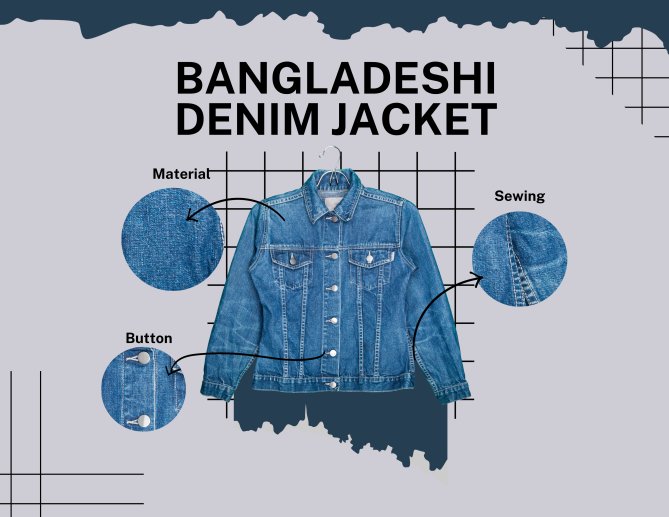
Bangladesh has become a major player in the global denim market, establishing itself as the leading supplier of denim garments to the US and EU. This success story is driven by a combination of factors, including significant investments, a focus on innovation, and a commitment to sustainability. Bangladesh today is the world's second-largest exporter of denim clothing, accounting for 22 per cent of global exports in 2022 as per WTO. This translates to an annual export value of almost $8 billion as per BGMEA. Industry analysts project Bangladesh's denim output will at 8-10 per cent each year in the foreseeable future.
What’s more, the denim sector directly employs over 1.1 million people in Bangladesh, with millions more jobs indirectly supported. Bangladesh has a manufacturing capacity of over 500 million denim garments and over 1.5 billion meters of denim fabric annually. The country has over 42 denim mills with a manufacturing capacity of over 900 million meters of denim fabric annually.
Factors driving Bangladesh's denim leadership
The rapid growth in denim sector has been due to several factors.
Increased investments: The Bangladeshi government and private sector have significantly invested in the denim industry, leading to the establishment of state-of-the-art denim mills. Investments have grown from Tk 8,000 crore to Tk 25,000 crore in a decade.
Focus on innovation: Bangladeshi denim mills are continuously developing new materials, treatments, and washes to cater to the evolving fashion trends.
Sustainability efforts: The Bangladesh Denim Alliance (BDA) is a leading initiative promoting sustainable practices in the denim production process, aiming to reduce water usage and eliminate harmful chemicals. And as per BDA there has been a 32 per cent decrease in water consumption and significant advancements in eliminating hazardous chemicals in Bangladesh's denim production since 2020.
Strategic location: Bangladesh's proximity to major markets like the EU and the US offers logistical advantages for denim exports.
Skilled workforce: Bangladesh has a large pool of skilled workers in the garment industry, contributing to efficient denim production.
Table: Bangladesh Exports to the US and EU
|
Year |
Denim exports to US (in $million) |
Denim exports to EU (in $ million) |
|
2022 |
942.96 |
1560 |
|
2023 |
649.96 |
1200 |
Denim exports a challenge
Denim exports to the US and EU declined in 2023 due to a sluggish global market and high production costs in Bangladesh. Also, the Ukraine war and economic slowdown have had an effect. Moreover, countries like Pakistan and Vietnam are emerging strong competitors in the denim export market. To tide over this situation Bangladesh needs to embrace automation and data-driven decision-making can further enhance efficiency and competitiveness.
Overall Bangladesh's denim industry exemplifies a remarkable success story. Through strategic investments, a skilled workforce, and a commitment to sustainability and quality, Bangladesh has emerged as a dominant player in the global denim market. The country is well-positioned to capitalize on future opportunities by embracing innovation and upholding its commitment to responsible production practices. The denim industry's success transcends economic indicators, fostering social development through increased employment, skill development, and industrial transformation. Bangladesh's denim story serves as a compelling example of how well-timed investments can drive innovation, sustainability, and the rise of developing nations in the global economic landscape.

Forget everything you thought you knew about nylon. That scratchy, utilitarian fabric of yesteryear is undergoing a serious transformation. Yes, nylon is back, and this time it's bringing a surprising blend of innovation, sustainability, and even a touch of luxury to the party.
Gear up for growth
The market is buzzing with excitement for nylon's resurgence. As per Fortune Business Insights global market size for nylon is $32.42 billion by 2026, and it's not just a one-region story. India, for instance, is experiencing its own nylon boom, with the market expected to reach a cool $5.2 billion by 2025.
Table: Global sector-wise penetration and growth
|
Region |
Market Size ($ million) (2023) |
CAGR (%) (2023-28) |
|
Asia Pacific |
14.2 |
4.8 |
|
North America |
6.8 |
3.9 |
|
Europe |
5.7 |
3.5 |
|
Rest of the World |
3.3 |
4.1 |
Move over yoga pants, nylon's got its sights set on a whole new wardrobe. While activewear remains a major driver (think high-performance leggings that won't quit), advancements are pushing the boundaries. Eco-conscious consumers are loving bio-based nylons, while innovative blends are opening doors to exciting new applications.
Innovation is the name of the game
• Sustainable swagger: Forget harming the planet for your next outfit. Bio-based PA 6 nylons offer a guilt-free alternative, letting you look good and feel good.
• Performance powerhouse: Who says functionality can't be fun? Nylon's making waves in carpets (think stain-resistant bliss with DuPont's Sorona) and footwear (lightweight support for your next adventure).
• Swimwear that makes a splash: Chlorine? No problem. Quick-drying? Absolutely. Sustainable options made from recycled nylon? You bet. Nylon's got swimwear covered.
• Fashion with function: Durable and water-resistant, nylon is taking outerwear by storm. Advancements are making sure it looks as good as it performs.
Brands taking notice
Major players in the fashion and sportswear world are taking note of nylon's potential. Sustainability champion Patagonia is using recycled nylon in a big way, while The North Face relies on its durability for their top-notch hiking gear. From running shoes to activewear, Adidas is leveraging nylon's performance benefits across their entire product line.
A fabric reinvented
Nylon's comeback is a story of reinvention. By embracing innovation, sustainability, and a touch of fashion flair, this once-humble fabric is poised to become a major player in the textile industry for years to come. So, the next time you see nylon, remember - it's not just for the gym anymore. It's a versatile, eco-conscious material with a surprising amount of style potential.

